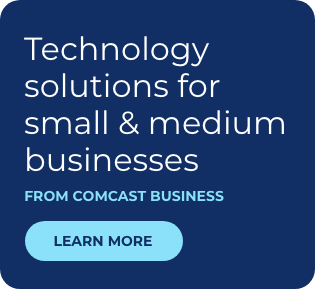Adopting a Remote-First Approach to Meet Employees and Customers Where They Are
Part of the Driving Digital Agility content series: Insights and strategies to pivot to digital business, navigate new work environments, and manage changing customer expectations.

The impact of the COVID-19 pandemic has been widespread regardless of business size or type. For many businesses, the dispersed workforce caused by social distancing restrictions, has created the need to do things differently and reach customers in new ways. Business models that had previously been successful just won’t work anymore because of the need for employees and customers to stay at a safe distance.
The disruptions in physical locations necessitated new ways of operating - making the move from physical business to digital business, from on-premise service to pick-up or house calls, and from in-person interactions to digital ordering and fulfillment. When COVID-19 hit, business leaders were forced to immediately reimagine their operating models in a way that would allow them to stay viable and available with a remote workforce as well as find new ways to reach customers and deliver their products and services. For many, these changes are likely to stick around for a while.
For many organizations this meant opting for a remote-first model for employees and customer interactions. A remote-first setup allows organizations to put processes, tools and systems in place that can allow for quick collaboration and mobilization of their workforce, rapid response to customer needs, as well as the agility to monitor the performance of these newly stood up systems, from anywhere.
Connecting Employees to Each Other
Whether your organization is still fully remote or you are working with a hybrid model with some employees on-site while others remain at home, it’s imperative to keep employees connected to their systems and applications as well as each other.
Adopting unified communications tools allows teams to connect and collaborate with screen sharing, file sharing, IM, call forwarding to a mobile number, and audio and video conferencing. For many that are working from home, bandwidth is an ongoing challenge with other family members or housemates competing for connectivity. To help with this, employees can reconfigure their home WiFi to help prioritize device applications, but it is not likely the best option for most. To establish a dedicated, enterprise-grade WiFi connection, another option is Comcast Business at Home.
Connecting Employees to Their Data
The paradigm for an organization’s data has also changed. Traditionally, data was confined to one place, typically on premises, typically at the HQ office. When COVID-19 hit, the data was still there, but everyone was outside. In order to access the data, organizations needed a way for employees to securely connect via private encrypted or VPN connections. Pre-COVID-19, these connections were likely set up to allow access to a limited number of employees - most definitely not the entire workforce.
To address this potential bottleneck of traffic trying to log in to an HQ’s VPN and improve performance, organizations can use a SD WAN solution which provides the ability to respond to significant swings in inside and outside traffic patterns. This network agility enables increased employee productivity, improved customer experience and automated network management.
Limited access to office spaces also includes IT managers who are more than likely also working from home. A remote-first model shift includes rethinking how they manage and monitor their network from afar. Using a platform like ActiveCore allows centralized network control via software applications. Having virtual network functionality can automate many network functions, speed up application deployment and simplify resource management.
Adjusting to Changing Customer Expectations
Regardless of the business or service that an organization offers, adjustments will need to evolve over time based on the needs of customers. The customer journey needs to be reimagined to reduce in-person interactions and touch features to provide for new safety requirements.
Quickly pivoting to a remote-first model to address these changes is critical for success. For some, this may mean standing up a fully functional e-commerce system - connecting all functions including warehousing, merchandising, marketing, and customer service. Other organizations are making the move outside. Literally moving their business to the curb or parking lot of their building to safely allow for curbside pick-up and outdoor services, such as dining, gyms classes or meetings. There are many great cloud-based systems available, but all of this needs a strong WiFi connection.
Previously, these new applications may have been hosted on-prem, but a dispersed workforce has forced the adoption of more cloud-based applications. The organization's broadband needs to be able to keep up with the increasing digital needs that these new cloud-based applications require. For some businesses operating with a fully remote or hybrid workforce, managed network services could be the best option to gain the necessary visibility into network usage patterns to better plan for capacity during normal and exceptional times. IT leaders can gain visibility and control whether they are on premises or working remotely.
Driving Digital Agility
Disparate workforces and evolving customer expectations have changed the way organizations are operating, likely for the long term. Many businesses are adopting a digital-first operating model that brings with it the agility and flexibility to address customer and employee needs as challenges and situations evolve. A strong digital connection between customers and employees allows for the real-time information flow necessary to maintain and grow your business.
For more information on how businesses can use technology to navigate new work environments and expectations, explore the rest of our “Driving Digital Agility” blog series.
With the shift to digital business, organizations must rethink old business models to remain agile.
Locked Content
Click on the button below to get access
Unlock NowOr sign in to access all content on Comcast Business Community
Learn how Comcast Business can help
keep you ready for what's next.










